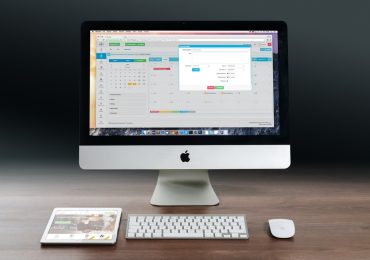Regular maintenance is essential to properly functioning a computer over time, and dusting your system with canned air can help prolong its usability; however, improper use may cause harm. You need to know the proper methods and suitable products for dust, grime on your screen, or build-up inside of the computer. This article will cover some common mistakes when using computer cleaners and tips on cleaning your PC the right way.
Wrong Kind of Cleaner
One of the most common mistakes made with a computer cleaner is choosing one meant for something other than the cleaned component. Different components of the computer require a unique cleaning solution. For example, screen cleaners are gentle on sensitive displays, while internal cleaners may help to remove dust and debris. Just like how using a multi-purpose cleaner on a monitor might harm it, or washing down your PC screen can be pointless too. Always choose a perfect computer cleaner for the part you would be using: a screen-safe cleaning solution for monitors (especially LED ones) and compressed air to go with those internal parts.

Cleaning Surfaces Using Cleaners
Another common mistake is spraying the computer cleaner directly on your screen. This may cause liquid to drip through holes into sensitive areas, leading to a short circuit or other damage. Testing on the underside or an inconspicuous area beforehand is a good idea, too. And never spray directly onto your surface—always use the cleaner with a soft, lint-free microfiber cloth. This step stops the liquid from getting into areas it shouldn’t and allows for a more focused, result-oriented clean.
Avoid Using Abrasive / Rough Materials
People sometimes use abrasive-to-the-touch materials like paper towels or rough rags while cleaning, which is wrong. These substances can damage the surfaces of screens and other materials by scratching them. How to clean: Always use a soft, lint-free microfiber cloth. These towels are gentle on the surface, yet they can grab and hold onto dust/dirt much better than traditional cotton towels without scratching.
Overusing the Cleaner
Overuse of computer cleaners. The most critical issue is that you contaminate the CPU if there is a lot of it. However, too much cleaner can leave a residue that may attract dust or mess with the computer. Use enough cleaner to cover the surface (do not soak cloth). Should you see streaks or a lot of residue, take your dry microfiber to remove any excess cleaner.
Disregarding Manufacturers Instructions
Failing to follow those cleaning instructions can mean you will be using the wrong methods when it comes time for your final clean, which could ultimately damage some of the equipment. Many computer manufacturers offer specific cleaning instructions for their products; those guides should always be your first step whenever possible. Just remember to follow these directions before using a computer cleaner so that you can use suitable materials and methods for your particular machine.
How to Clean a Running Laptop
It is risky to clean the computer when it is on as this could result in damage. Dust and trash that we can scatter to the side, where there will likely be some sensitive base mucking going on as their risque-diboutique.fr are currents running wild in both cams. As usual, turn off and unplug your computer before cleaning it. It also covers the internal parts and ensures you do not get hurt during cleaning.
Neglecting Regular Cleaning
Many users only clean out their computers once they look visibly dirty, yet regular maintenance is essential to keep a computer working its best. With time, dust and dirt will accumulate, causing hindrances in its working and diminishing its life span. Set a cleaning schedule, weekly or fortnightly, depending on how often you use the items and your environment. Regular computer cleaning is necessary to keep it running smoothly and for longer.
Inadequate Ventilation
If your computer cleaner is toxic and begs your skin or eyes for fresh air, provide that essential oxygen! Make sure to clean somewhere with ventilation as best you can so that there is less toxic chemical exposure. Instead, choose green cleaners that are both environmentally safe and non-toxic for indoor use.
Applying Excessive Force
Delicate components can be damaged if you use too much force to clean them. Always apply light pressure while cleaning your computer’s outer parts or inner areas. Compressed air should be used carefully for internal dusting (in the case of cleaning fans or vents)—you want to get rid of accumulated dirt without blasting it further into your system. It cleans softly to avoid accidental destruction and preserve your computer’s stability.
Failure to Include Peripheral Devices
Lastly, clean peripherals such as keyboards, mice, and printers. Dust and dirt can also build up on these components, like the primary computer. Use a computer cleaner for these peripherals, too, and then clean them properly and gently. Cleaning peripherals improves system performance and maintains cleanliness.
Conclusion
To sum up, good user practices should also avoid mistakes in standard computer cleaners usage. Below are some great products to clean your computer and do the job without causing damage, as long as you apply them correctly and follow the manufacturer’s instructions. Maintenance and cleaning of your computer can provide second-to-none results, which will serve you well in the longevity department for a good time.
meta description: Avoid common computer cleaner mistakes. Our guide helps you prevent damage and get the best results from your cleaning routine.